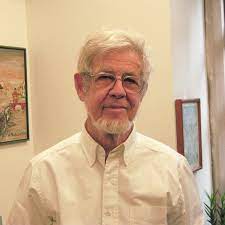Gans, Herbert

Bio: (1927-2025) American sociologist. Herbert Gans was born in Germany but fled the country due to the rise of Nazism, so in 1940 he came to the United States, where he remained for the rest of his life. He received his doctorate from the University of Pennsylvania, where he began his academic career, and later taught at Columbia University. The basis of Hans's theoretical framework is functionalism, and the narrower field of study is urban sociology. Gans based his urban studies on participatory observation, and the product of one such study was Urban Villagers (1962), in which he portrayed the lives of Americans of Italian descent in Boston. He concluded that the social problems that exist in poor neighborhoods are not a product of the cultural characteristics of the inhabitants, but are a consequence of poverty. Gans introduces the concept of "symbolic ethnicity" which refers to the nostalgic attitude of emigrants towards the culture of the country they came from. This ethnicity is symbolic because it is based more on sentiment than on preserving the original cultural features.
In Popular Culture and High Culture (1974), Gans explores the many different cultural tastes that exist in the United States and advocates cultural pluralism. He recognized five such different types of culture: 1) high culture - it is consumed by the upper class, and the creative and abstract aspects of art are emphasized; 2) upper middle culture - it is consumed by the upper middle class, this culture is less innovative, so too experimental and too "simple" content is rejected; 3) Lower Middle Culture - this is the dominant culture in America and it emphasizes easy-to-understand and easy-to-consume content; 4) lower culture - it is consumed by workers, and the most characteristic contents are action movies, rock and country music, family series and the yellow press; 5) low culture - it is consumed by the poorest people from the countryside, and the emphasis is on very easy and receptive content. Gans studied both youth and ethnic cultures. The hierarchy of cultures and tastes is closely linked to differences in wealth, reputation, and power. The upper-class finances and protects its culture, wanting to keep it to itself, while the differences in cultural spending between the middle and working class are still large.
In his analysis of the relationship between the poor and the wider society in More Equality (1973) and The War Against the Poor (1995), Gans concluded that poverty has "positive functions" for the rest of society because it provides cheap labor. On the other hand, the public and the media present the poor as "undeserving" of aid and blamed their condition solely on the poor themselves. In addition, scholars who study poverty most often come from the middle class, so they are far from those who study in terms of political power and culture. It should be noted that the positive effect of poverty in Gans's analysis does not have a normative connotation, therefore, it does not justify poverty, but only describes the function it performs in society. In recent research, Democracy and the News (2003), Gans has focused on the media and criticizes those who produce news, because they are controlled by large corporations and therefore do not report to the citizens truthfully, thus undermining the foundations of American democracy.
Fields of research
Art Character, Social City Community Corporations Culture Democracy Ethnicity Ghetto Immigration Individualism Innovation Media Middle Class Poverty Rural Sign and Symbol Status Underclass Working ClassTheoretical approaches
FunctionalismMain works
The Balanced Community (1961);
Urban Villagers (1962);
The Levittowners (1967);
People and Plans (1968);
More Equality (1973);
Popular Culture and High Culture (1974);
Deciding What’s News (1979);
Middle American Individualism (1988);
‘‘Deconstructing the Underclass: The Term’s Danger as a Planning Concept.’’ Journal of the American Planning Association (1990);
People, Plans, and Policies (1991);
The War Against the Poor (1995);
Making Sense of America (1999);
Democracy and the News (2003);
Imagining America in 2033: How the Country Put Itself Together After Bush (2009).

